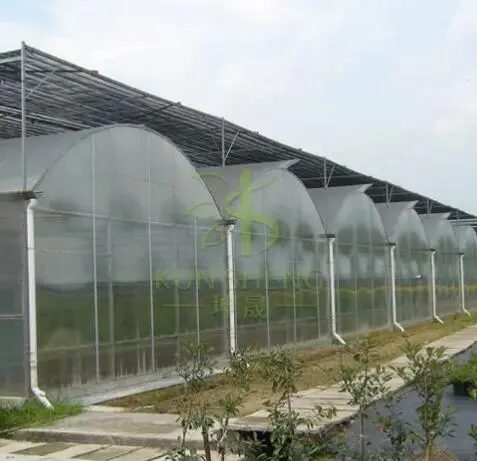Feb. 02, 2024
A multi-span greenhouse is a versatile and advanced structure designed for agricultural purposes, allowing controlled cultivation of crops in a protected environment. Unlike traditional greenhouses, multi-span structures feature multiple connected bays or spans, providing a larger and more adaptable growing space. Here's a comprehensive guide covering the key aspects of multi-span greenhouses.
1. Structure and Design:
Frame Materials: Multi-span greenhouses typically have frames made of durable materials like galvanized steel or aluminum. These materials provide strength and resistance against corrosion.
Covering Materials: The covering materials can include polyethylene film, polycarbonate panels, or other translucent materials. These materials facilitate light penetration while offering insulation and protection.
2. Advantages of Multi-Span Greenhouses:
Increased Growing Area: The multiple spans allow for a larger growing area compared to single-span greenhouses, making them suitable for commercial-scale farming.
Adaptability: Multi-span greenhouses offer flexibility in terms of crop selection, cultivation methods, and environmental control. They can accommodate various crops with different temperature and humidity requirements.
Efficient Use of Space: The design optimizes space utilization, providing a higher crop yield per square meter compared to traditional open-field cultivation.

3. Environmental Control:
Temperature Regulation:Commercial Multi-span greenhouses are equipped with ventilation systems, shade curtains, and heating systems to regulate internal temperatures, creating an ideal environment for plant growth.
Humidity Control: Automated systems manage humidity levels to prevent excessive moisture, minimizing the risk of diseases and promoting a healthy growing environment.
Lighting Systems: Supplemental lighting systems can be integrated to extend daylight hours, particularly in regions with limited sunlight during certain seasons.
4. Irrigation Systems:
Drip Irrigation: Many multi-span greenhouses employ drip irrigation systems, delivering water directly to the plant roots. This method conserves water, reduces the risk of disease, and ensures efficient nutrient uptake.
Fertigation: The integration of fertigation systems allows simultaneous application of water and fertilizers, providing precise control over nutrient delivery to the plants.
5. Crop Management:
Vertical Farming: Some multi-span greenhouses incorporate vertical farming techniques, utilizing vertical space to maximize the number of crops grown. This is especially beneficial for high-value crops.
Automation and Monitoring: Advanced multi-span greenhouses may feature automated systems for tasks such as climate control, irrigation, and monitoring. These systems enhance operational efficiency and reduce labor requirements.
6. Economic Considerations:
Investment Costs: While multi-span greenhouses may involve higher initial costs compared to traditional open-field farming, the potential for increased yields and crop quality often justifies the investment.
Return on Investment: The controlled environment and extended growing seasons contribute to higher crop yields, leading to a potentially faster return on investment for greenhouse operators.
Conclusion: In summary, multi-span greenhouses for sale represent a significant advancement in modern agriculture, offering a controlled and efficient environment for crop cultivation. Their adaptability, environmental control features, and economic benefits make them a popular choice for commercial growers seeking sustainable and high-yield farming solutions. As technology continues to evolve, multi-span greenhouses are likely to play an increasingly crucial role in global food production.
Previous: How to Turn a Shipping Container Into a Greenhouse
Next: None
If you are interested in sending in a Guest Blogger Submission,welcome to write for us!
All Comments ( 0 )